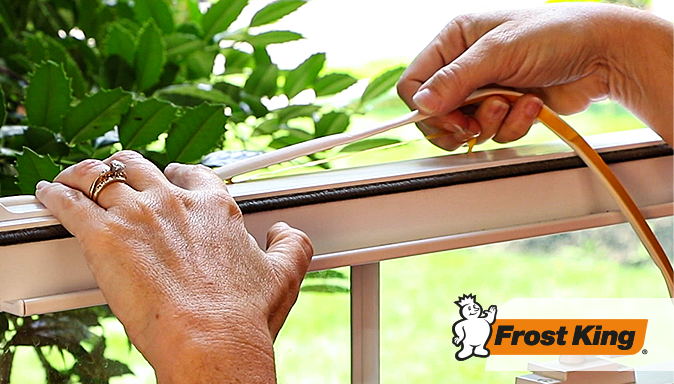Reports of rising inflation and higher energy costs this winter are all over the news. And while you can’t control inflation or the price of oil, there are smart things you can do to cut your energy use, reduce waste, and lower your bills all winter long. We’ve got six easy projects to do this month to help keep your energy costs down.
1. Do an energy audit. Do you know the problem areas of your home that are driving up your heating bills? A home energy audit can identify the areas of your home that leak energy and let cold air in. You can either schedule an audit with a home energy professional to do a thorough analysis of your home’s energy use (energy.gov recommends this site to find a local certified professional auditor) or you can DIY it to pinpoint problem areas yourself. In this video, our Handy Guys explain how to do a few different, inexpensive tests to detect gaps around windows and doors that are letting in drafts and making your home uncomfortable:
Once you’ve identified gaps, seal them up. Frost King has a range of products to keep all that warm air you’ve paid to heat inside your home. Start by adding weatherstripping around windows and doors and a door sweep to exterior doors to cut down on drafts and energy leaks.
2. Install a smart thermostat. If you haven’t already upgraded to a programmable thermostat, what are you waiting for? According to gov, you can save up to 10% a year on heating and cooling costs by simply turning your thermostat back 7°-10°F for 8 hours a day—and a smart thermostat makes it easy to create a schedule based on your family’s routine so your home is toasty warm when you’re home but cooler when no one is around. It can even “learn” your household’s patterns, automatically reducing the heat when no one is home and turning it up when people come home—and it can be controlled through an app that provides monthly reports about your energy usage and how it compares to the month before.
3. Reverse ceiling fans. Does the idea of running your ceiling fan in the winter seem counterintuitive? Most fans have a switch that reverses the way the blades turn—if you set the fan to spin clockwise, it will push warm air down into the room, making rooms feel warmer.
4. Put a stop to leaky windows. Older windows don’t have the energy efficiency of newer windows, but you don’t have to shell out thousands of dollars to replace all your windows to keep heated air from escaping from your home. During the day, leave blinds and drapes open to let the sun shine in and naturally warm your living spaces, and close them at night to trap in heat and add an extra layer of insulation between you and the outside. To maximize the sun’s warming rays, prune trees and shrubs outside windows that are blocking sunlight. You can also cover drafty windows with our Indoor Shrink Window Kits. They’re a low-cost solution that can help you stop up to 35% of the heat lost through your windows and they’re easy to install—watch this video for step-by-step instructions:
5. Check your HVAC system. If the filter is dirty, your furnace has to work harder to heat your home—and that can drive up heating costs fast. Change filters regularly to keep heating bills in check. While you’re at it, take a look at your HVAC system’s ductwork. Energystar.gov estimates that 20 to 30 percent of the air that moves through the duct system is lost due to leaks, holes, and poorly connected ducts: make sure that heated air gets to your rooms by wrapping exposed ducts with our Foam and Foil Duct Insulation.
6. Rearrange furniture. Take a quick look around your rooms. Are couches and chairs blocking heating vents and keeping warm air from circulating in your rooms? Pull furniture away from the vents and add Heat and Air Deflectors that direct warm air down so rooms feel warmer. Watch this video to see how it works:
